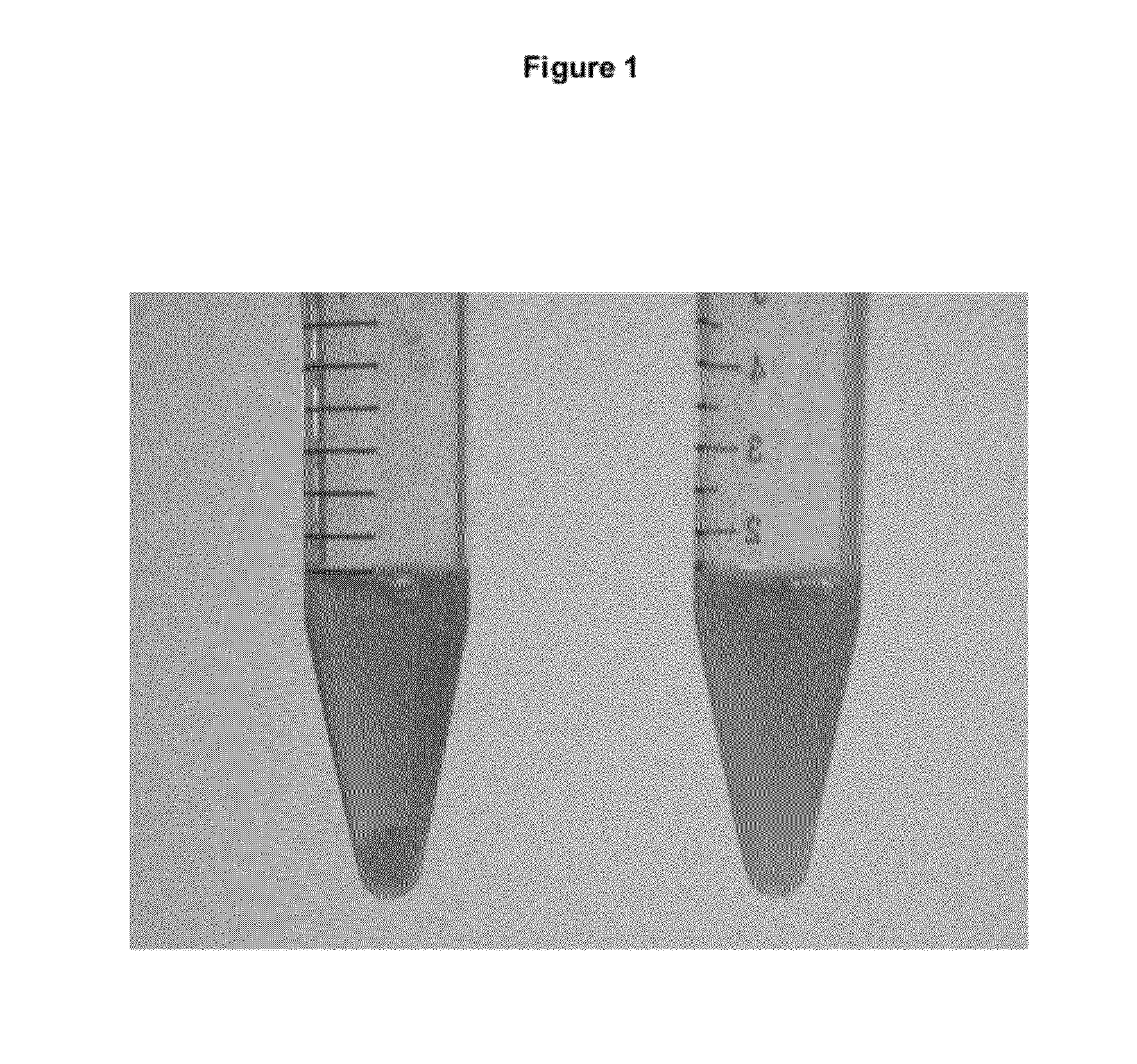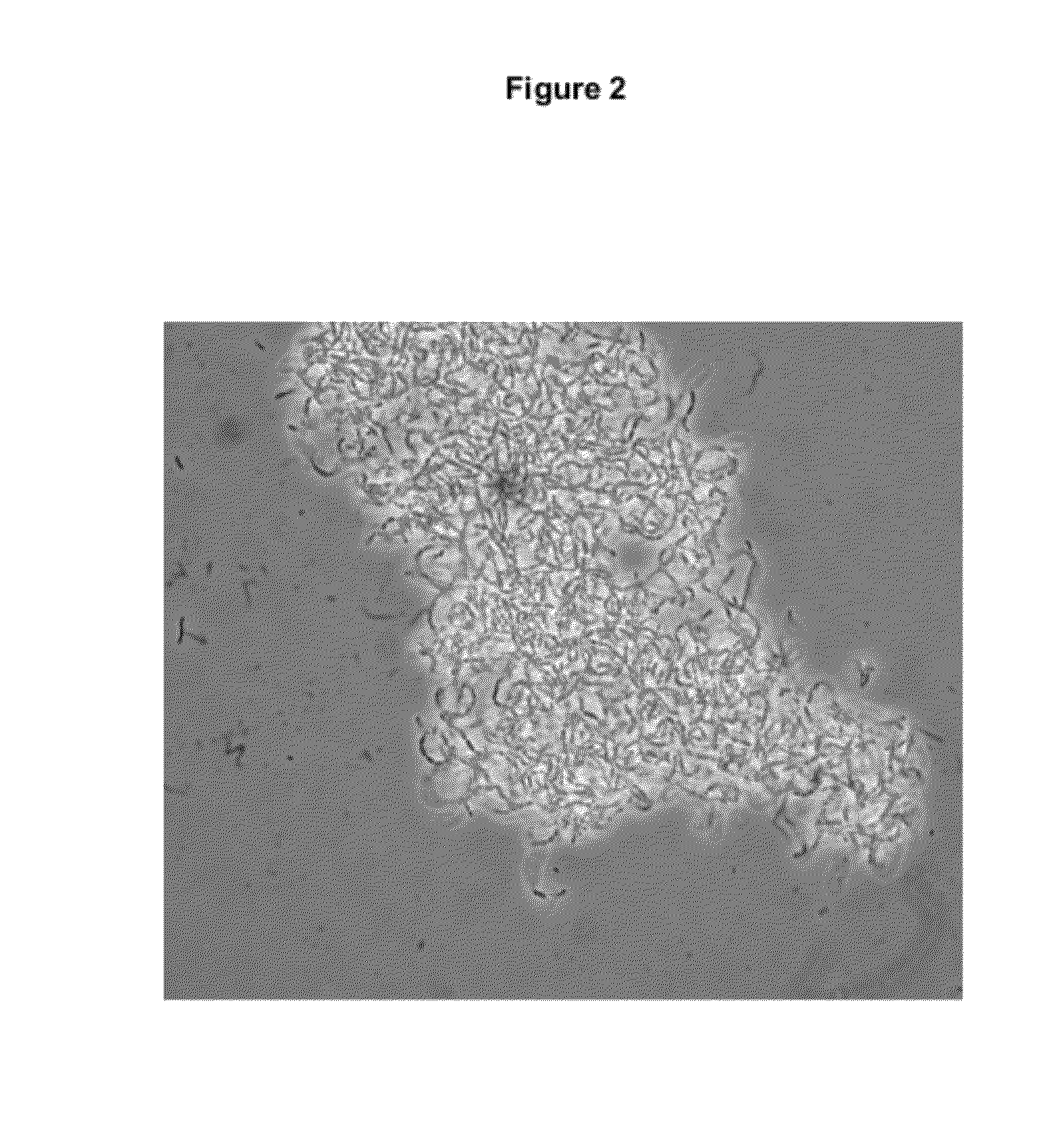Means and Methods for Preventing and/or Treating Caries
a caries and microorganism technology, applied in the field of microorganisms, can solve the problems of insufficient stability of prior art agents, ineffective treatment of caries, and inability to provide stable agents
- Summary
- Abstract
- Description
- Claims
- Application Information
AI Technical Summary
Benefits of technology
Problems solved by technology
Method used
Image
Examples
example 1
Storage and Growth
[0216]Storage and growth of strains can occur according to ordinary procedures. For example, strains can be stored as frozen stocks at −80° C. 1 ml of a culture can be grown to stationary phase (OD600 / mL 4-8) in MRS-Medium and mixed with 500 μl of a sterile 50% glycerine solution and frozen. Cultures of S. mutans can be grown in TSY-media to stationary phase (OD600 / mL 1-2) and treated as mentioned above. Cultivation of S. mutans (DSMZ 20523, serotype c; NCTC 10923, serotype e; NCTC 11060, serotype f as well as non serotyped isolates) as well as cultivation of lactobacilli can be done in 5 ml in closed Falcon tubes at 37° C. without shacking over night.
[0217]In particular, the strains used in the present application were stored as frozen stocks at −80° C. 1 ml of a culture grown to stationary phase (OD600 / mL 4-8) in MRS-broth was mixed with 500 μl of a sterile 50% glycerol solution and frozen.
[0218]In particular, cultures of S. mutans were grown in TSY-broth to stat...
example 2
Taxonomic Classification of Strains
[0220]The taxonomic classification of the strains was done according to their carbohydrate fermentation pattern. This was determined using the API 50 CH (bioMerieux, France) system and analyzed using APILAB PLUS software version 3.3.3 (bioMerieux, France).
example 3
Test on Aggregation of Streptococcus mutans
[0221]Mixing of the lactobacilli with S. mutans was done in volumetric ratios of 3:1 to 60:1 (S. mutans:lactobacilli), this corresponds to a ratio of colony forming units from 1:50 to 1:2.5. An optical density measured at a wavelength of 600 nm in 1 ml means preferably for S. mutans 3×108 colony forming units and for lactobacilli preferably 7×109 colony forming units. Mixing was done in 2 mL volume in 15 mL Falcon tubes. The culture suspensions were diluted with PBS-buffer to obtain the volumetric ratios mentioned above while keeping the final volume at 2 ml. The mixture was vortexed for 15 seconds. An aggregation is visible as an immediate turbidity of the suspension. The tubes were left undisturbed for 20 min, after that period of time the aggregates settle as a visible pellet whereas non-aggregating mixtures stay in suspension.
[0222]As a control, self-aggregation of the respective Lactobacillus strain and the S. mutans strains was alway...
PUM
| Property | Measurement | Unit |
|---|---|---|
| volume | aaaaa | aaaaa |
| volume | aaaaa | aaaaa |
| temperature | aaaaa | aaaaa |
Abstract
Description
Claims
Application Information
 Login to View More
Login to View More - R&D
- Intellectual Property
- Life Sciences
- Materials
- Tech Scout
- Unparalleled Data Quality
- Higher Quality Content
- 60% Fewer Hallucinations
Browse by: Latest US Patents, China's latest patents, Technical Efficacy Thesaurus, Application Domain, Technology Topic, Popular Technical Reports.
© 2025 PatSnap. All rights reserved.Legal|Privacy policy|Modern Slavery Act Transparency Statement|Sitemap|About US| Contact US: help@patsnap.com


